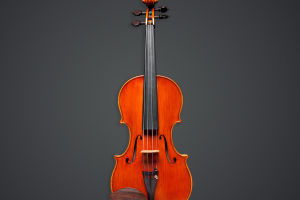The sitar is a long-necked wooden lute, the most important and popular traditional instrument in India. It has a soft, pearly tone and is the most magical expression of the grumbling, twisting, and turning melodies of Indian music.
Ravi Shaker is undoubtedly the most important contributor to the introduction of the Indian Sitar to Western audiences, and indeed to the world.
The origins of the Sitar are widely varied. The Sitar is the most important plucked string instrument in North India. The exact date when it was adapted to the original form we see today is not known.
Legend has it that the sitar was already in existence in the 14th century, but there is no doubt that by the end of the Mughal Empire, in the 1700s, it was gradually becoming more widespread.
Adapted from the long-necked lute brought to India from Central Asia, the sitar flourished as a court instrument in the 16th and 17th centuries and became the principal instrument of Hindustani music.
Today, there are two major schools of sitar music in India: the Vilayat Khan and the Ravishankar. Many open-minded Westerners have also widely embraced the sitar in popular music, thanks to a handful of adventurous rock musicians in the formative decade of musical exploration.
Today, the sitar is synonymous with all things psychedelic in rock music.
With its soft, pearly tone, the sitar is one of the most magical expressions of the whining, twisting melodies of Indian music, popular mainly in northern India and Pakistan.
The sitar has seven main strings on the upper layer and eleven resonating strings on the lower layer. The most unusual feature of the instrument is the two dozen or so arched metal pins in the neck, which not only raise the tone by four degrees by pressing the strings with the fingers, but also move.
The tuning of the sitar is much more complex than that of other instruments. The playing position is also crucial, as the player sits with his legs crossed, resting the body on his left foot and the neck on his right knee, to ensure that the sitar sits firmly in front of him, freeing up his hands to play freely.
The sitar's complex structure and plucking methods are so elusive that it is difficult for the average person to master the instrument without a good master. The sitar is an instrument that is in keeping with the common desire of Indians and God for beauty. Indian musicians see their role as performers as a sacred task.
This devotional attitude towards the sacred instrument contrasts with the casual attitude of Western popular music. They believe that music is not for entertainment or enjoyment; the musician must uplift the soul of the listener. The sitar, in turn, is the best vehicle for this soul. In India, a sitar can play all the sorrows of the world.
At the same time, the sound of the instrument can reveal the social class and status of the player, which is rich and varied. The way in which Indian music is played and composed varies according to the mood and expression of the musician at the time and is an extremely free-flowing form of improvisation.


